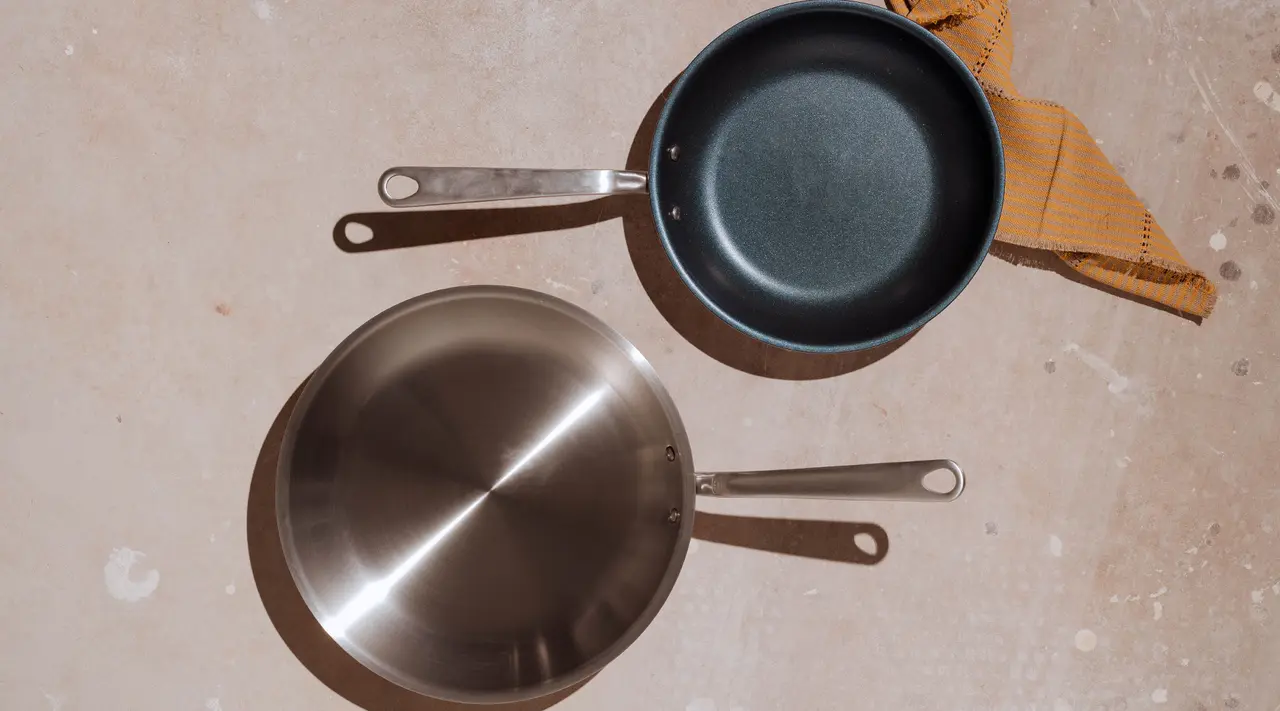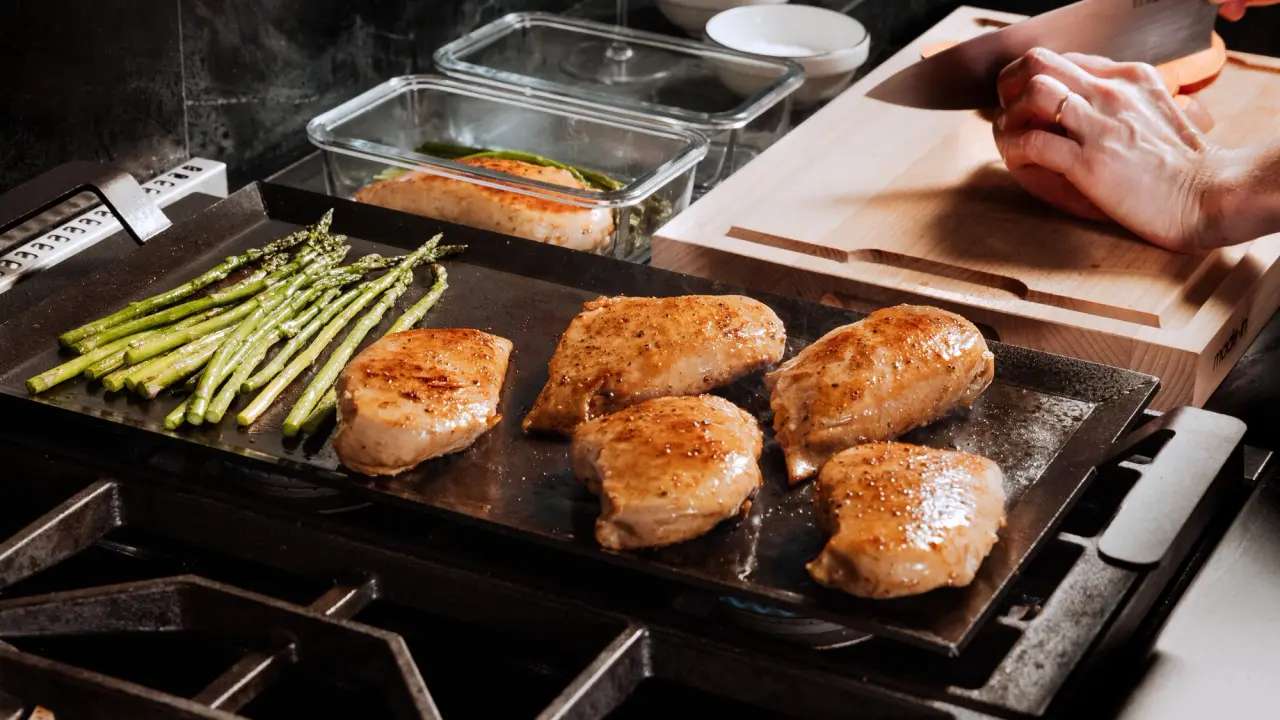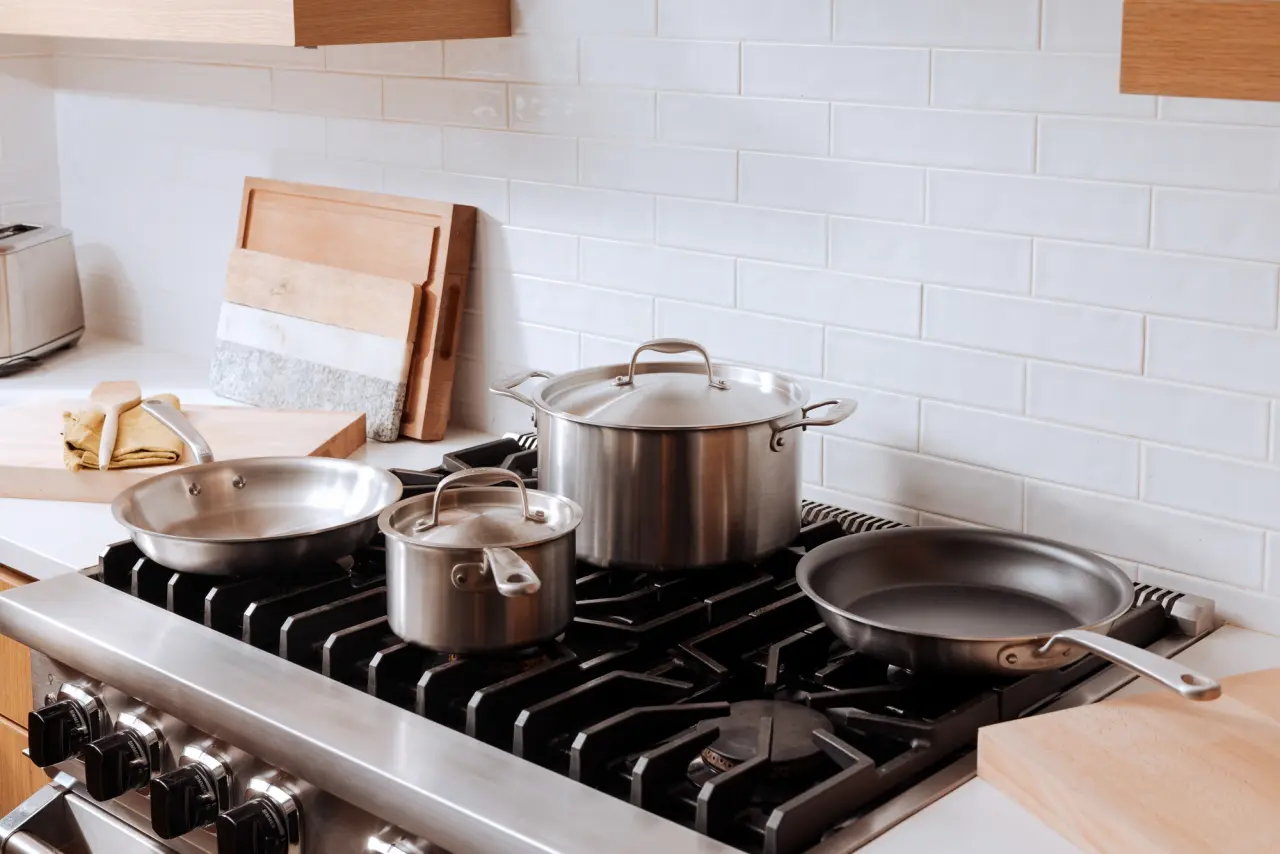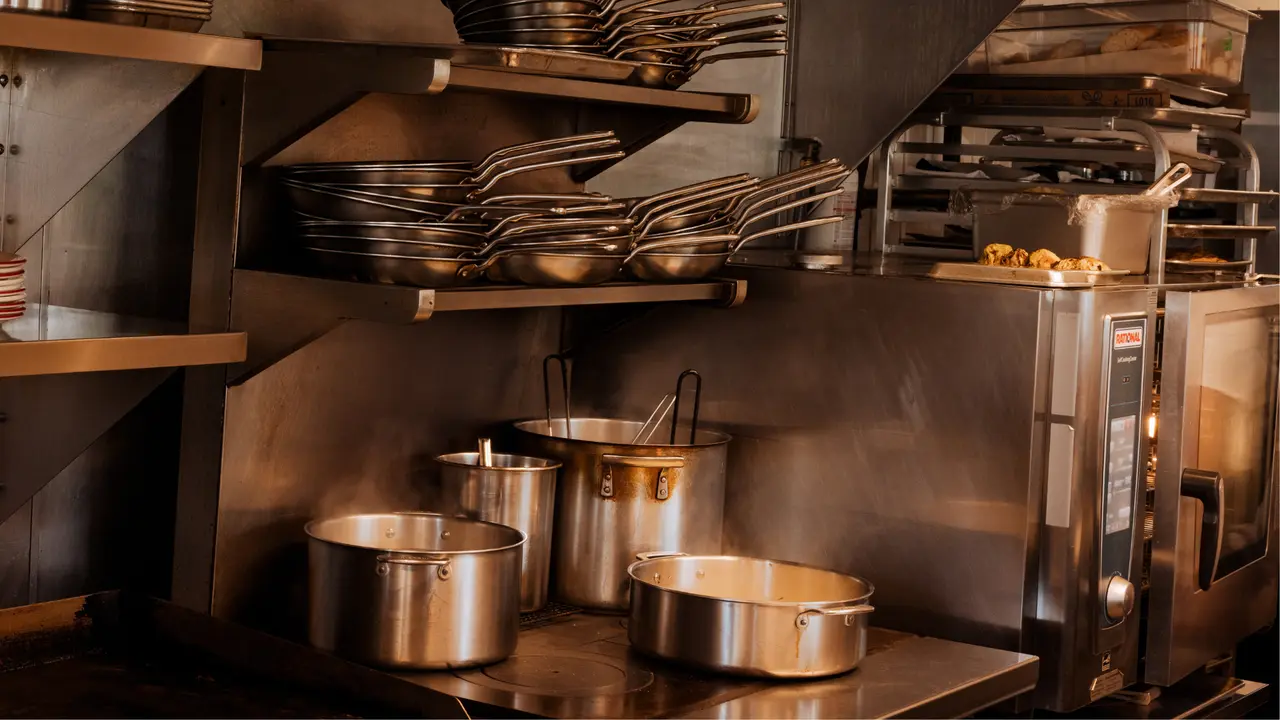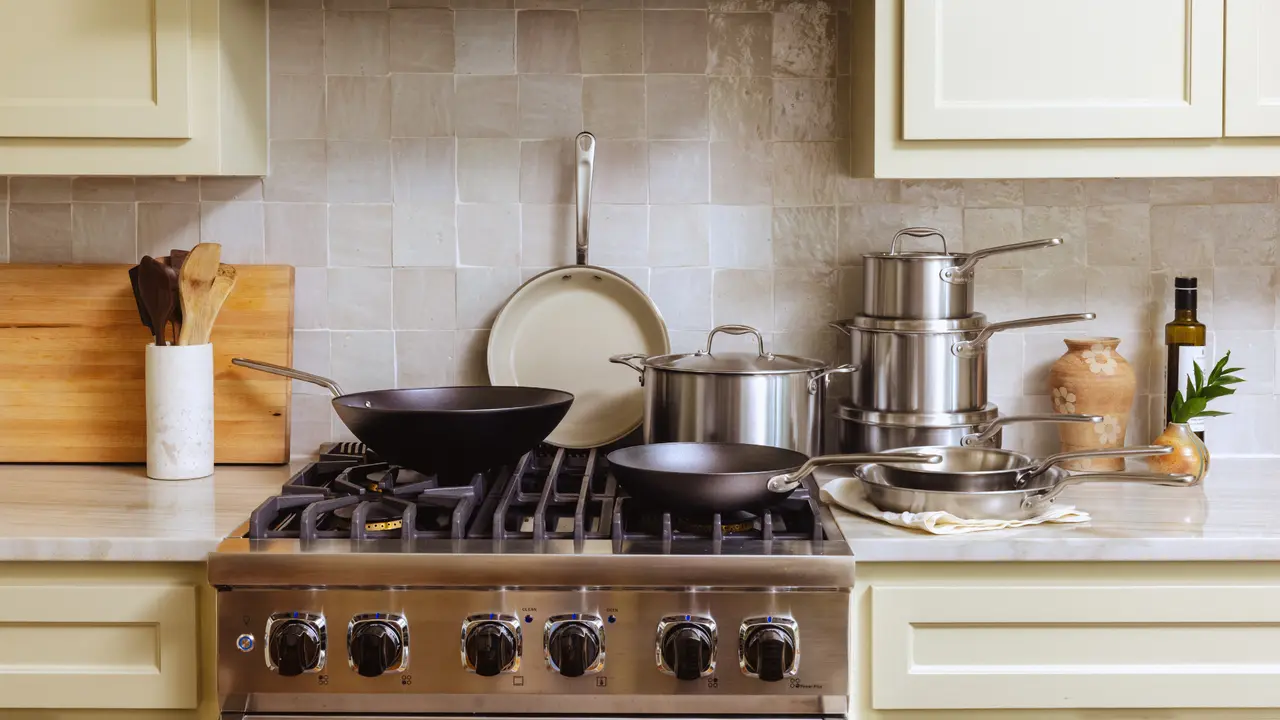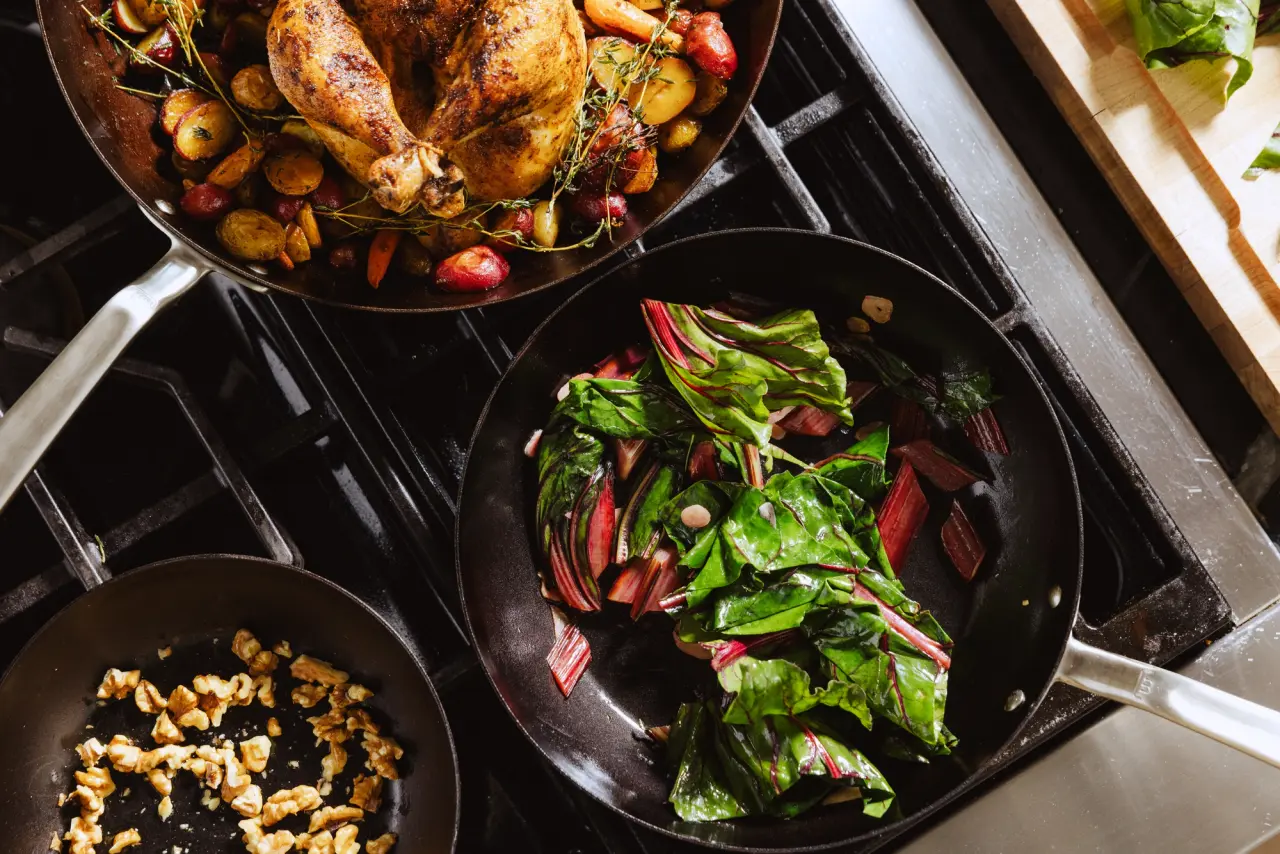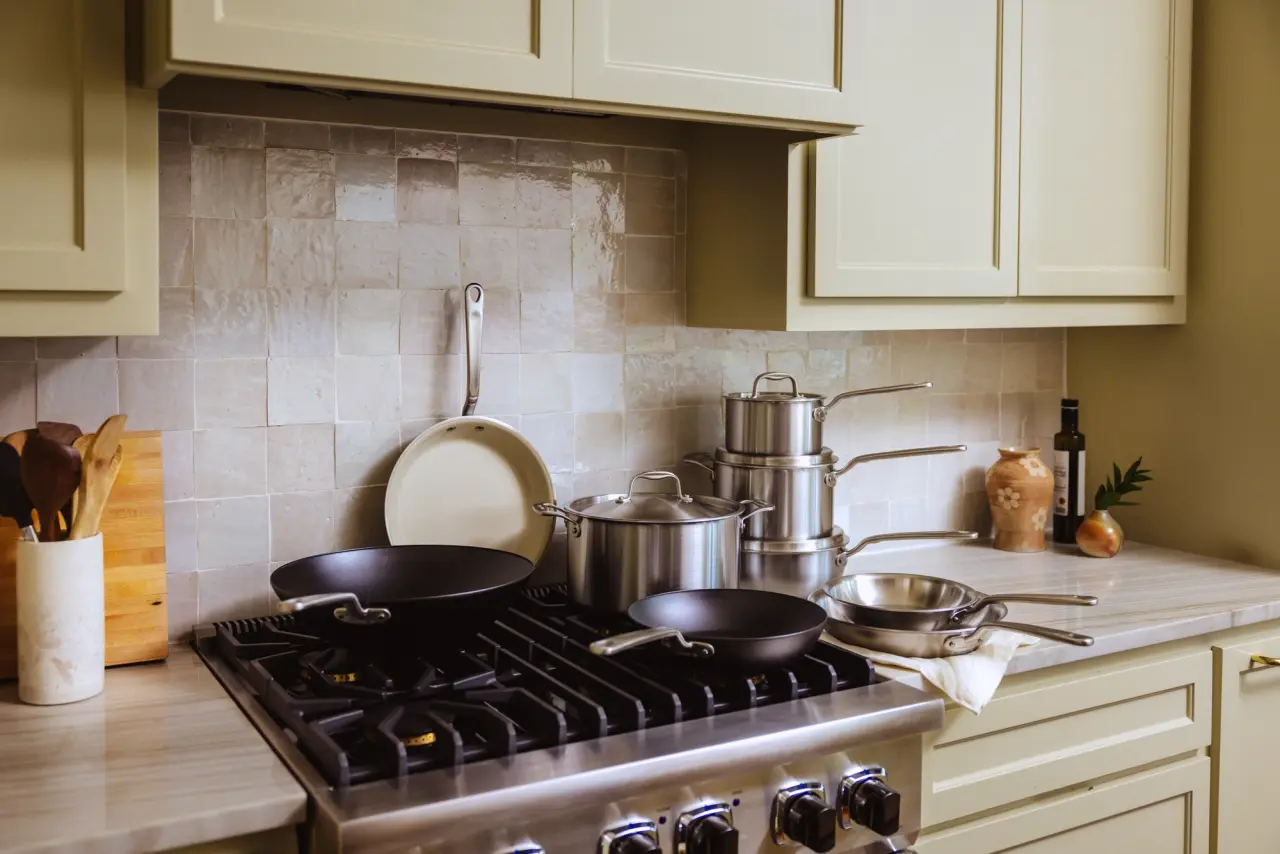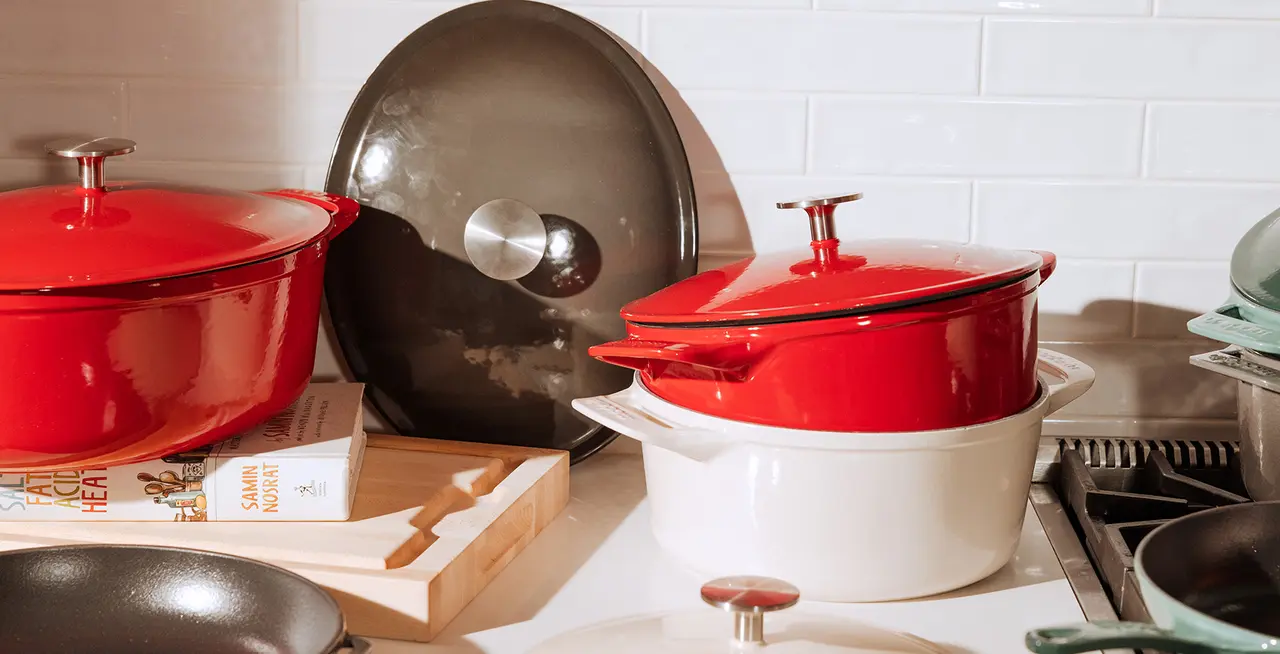If you’re shopping for new cookware, then you've probably heard of both non stick and hard anodized cookware, but may not be sure of the difference between them.
Both are made from the same materials—aluminum, stainless steel, or copper—but the ways in which they’re manufactured gives them different properties and unique advantages.
Here, we'll explain how each type of cookware works so that you can make an informed choice about which one is right for your kitchen.
What Is Non Stick Cookware?
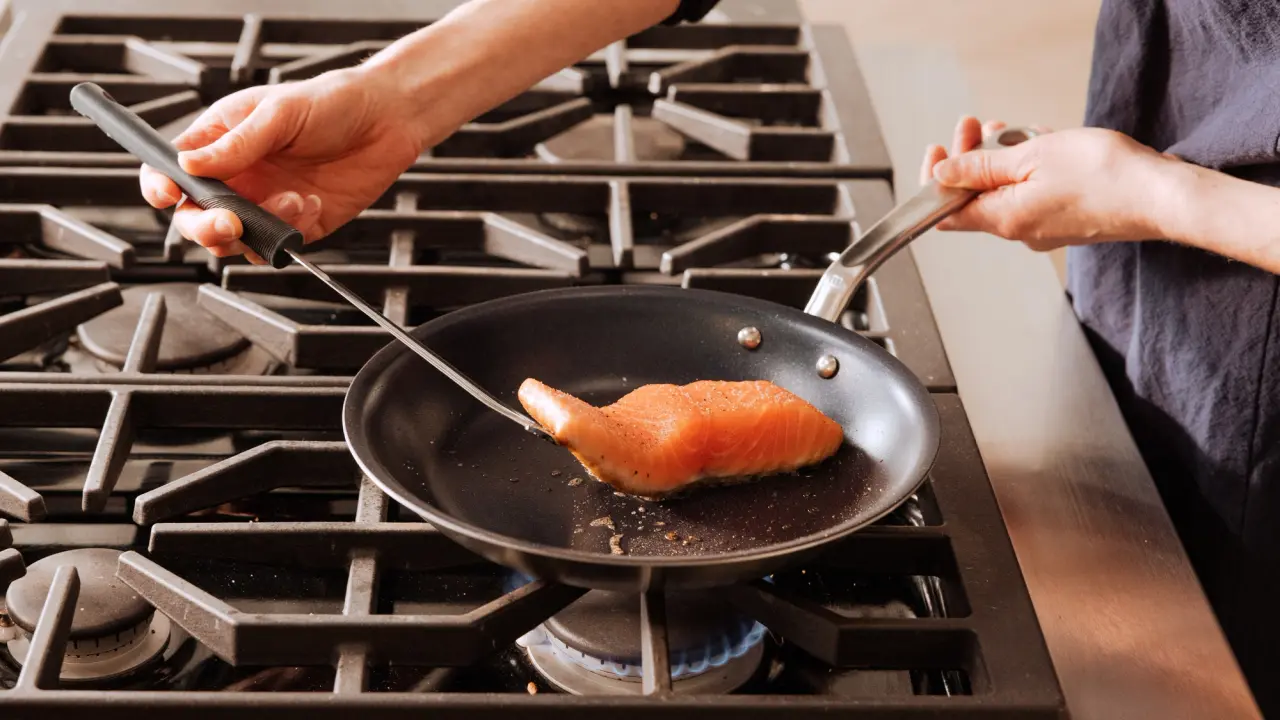
Non stick cookware features a food-safe, no-stick coating that makes it easy to cook delicate ingredients without sticking. Home chefs love non stick for the ease it imparts to both cooking and cleaning, which can be done by simply wiping it down with a sponge or cloth.
Our Non Stick Collection starts with the same body as our Stainless Clad Cookware, before being coated with multiple layers of professional-grade, extremely durable coating.
Advantages of Our Non Stick:
- Cooking with non stick doesn't require cooking fat like oil or butter, making it the perfect pan for health-conscious home cooks.
- Because of their Stainless Clad core, they offer even, consistent heating with no hot spots.
- Non stick is incredibly easy to both clean and maintain—simply rinse with warm water and wash with a mild dish soap. Avoid using abrasive sponges or cleansers (like steel wool) as they can scratch and damage the non stick coating.
Considerations of Non Stick
Like all types of cookware, there are things to keep in mind when shopping for or using non stick pans.
- Non stick requires use of soft, specific utensils like wood and silicone to keep from scratching or damaging the coating.
- Some non stick pans are made cheaply and may need to be replaced often once their coating wears off.
- Certain brands of non stick cannot be used at high temperatures or be used in the oven, which limits its usages.
What Is Hard Anodized Cookware?
Anodizing is a process that changes the surface of metal, like aluminum, by adding a layer of oxidation. The anodized layer is strong, non-porous, and ideal for cooking ingredients at different temperatures.
Most hard anodized cookware has been anodized to a depth of at least 0.3mm, which makes it extremely durable. It can withstand high temperatures, is non-reactive and can be used to cook acidic ingredients, and doesn’t scratch easily. Some hard anodized pans can also feature a non stick coating atop of the anodized layer.
Advantages of Hard Anodized Pans
- Hard-anodized aluminum is known for its durability and can last up to 10 years or more if properly cared for.
- These pans can be used at any temperature—from stovetop to oven—and won't warp or scratch as long as you treat them properly.
- Unlike traditional aluminum pans which often use plastic handles, hard anodized pans will typically come with stainless steel handles that won’t melt in high heat.
Considerations of Hard Anodized Pans
- Hard anodized cookware is durable, but it can scratch if you use sharp-edged metal utensils—especially on a non stick coating.
- These pans are often heavier than other types of cookware.
- Hard anodized pans have some non stick capability, but often require the use of oil, butter, or another cooking fat to keep food from sticking.
- These pans are not meant to go in the dishwasher and need to be hand washed instead.
Non Stick vs. Hard Anodized: Which Is Better?
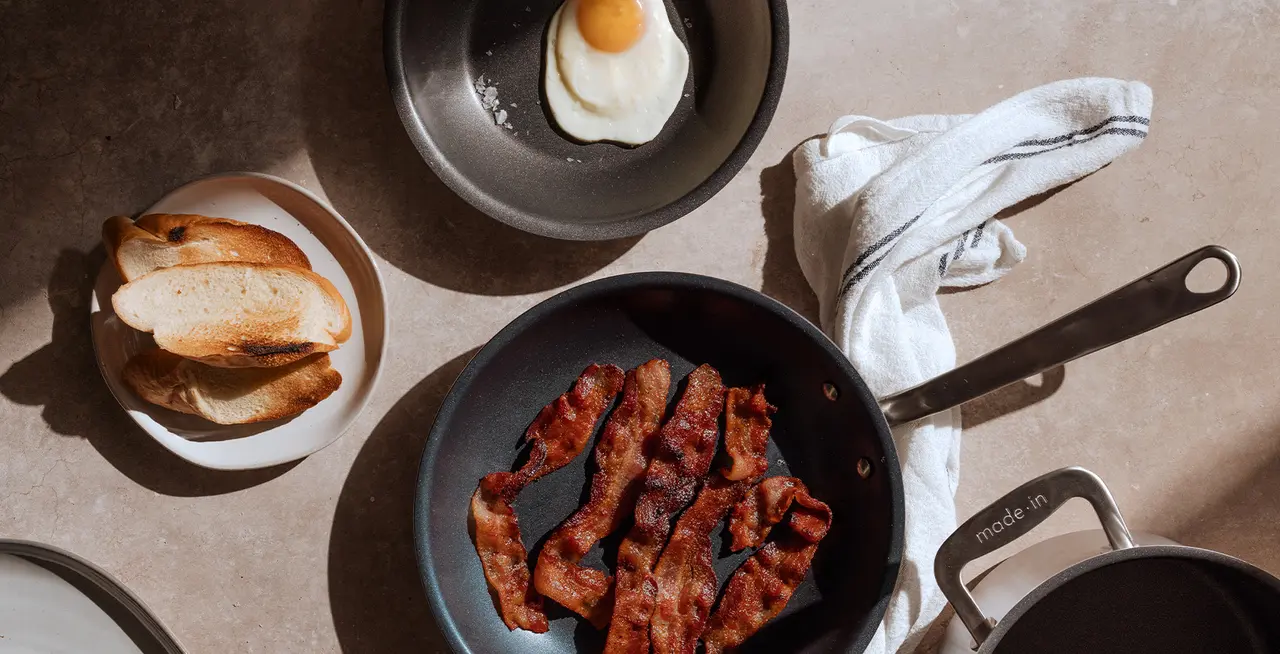
Ultimately, the cookware material you choose depends on your personal preference and cooking style. Non stick cookware cleans up easily after cooking, and when properly cared for, can last a long time. This versatile cookware can be used for everything from eggs to fish using little to no oil.
Hard anodized cookware has many of the same benefits as non stick pans, but can be more durable and scratch-resistant than some brands of non stick. That means you don't have to worry about your pots and pans getting scratched up when you're using them every day.
Both types of cookware are safe for use on gas, electric, glass, and induction stoves. But some differences between them make each better suited for certain types of cooking—scrambled eggs or other delicate, stick-prone dishes that cook quickly are better suited for non stick, while larger proteins like steak and other meals that cook slower will generally be more successful when cooked in a hard anodized pan.
Ready to Shop?
The differences between non stick and hard anodized cookware are pretty simple to understand—all you need to do is decide which type of material meets your needs and preferences better.
